
Virginia Grace Honored in New Student Center
The American School of Classical Studies at Athens is pleased to announce a gift from the Friends of Virginia Grace in support of the new Student Center. Mark L. Lawall, currently Chair of the School's Managing Committee, initiated the effort to name a bedroom in memory of this founder of the modern field of amphora studies, and it was met with a generous response by scholars young and old who benefitted from the fruits of Grace's long career. The Virginia Grace Room will be located on the second floor of Loring Hall.

| Virginia Grace on holiday in the Turkish Mountains, during war service in Ankara, 1943 (photo by Charles lffla) |
Virginia Randolph Grace (1901–1994), a classical archaeologist, left behind a remarkable legacy—files consisting of several hundred thousand "records" of the stamps used on ancient wine and oil amphoras from sites in the Mediterranean world, particularly in the Hellenistic period, including more than 25,000 stamped handles found during excavations of the Athenian Agora. As a result of this work, amphoras and their stamped handles are now useful as a tool for closely dating archaeological contexts and serve as a primary indicator for tracing and understanding ancient trade in the Mediterranean. She was a fellow of the School's Agora Excavations in 1932, an affiliation that was to last her lifetime.1
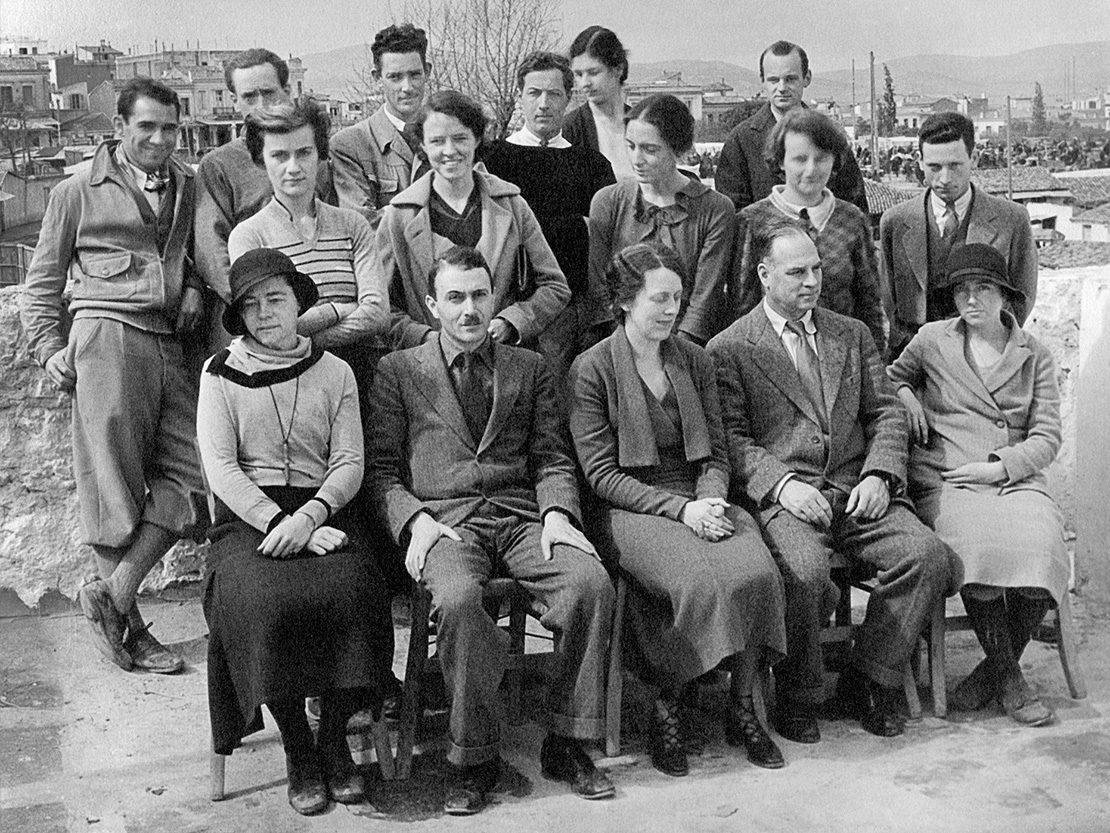
| Virginia Grace (second row, middle) with the Agora Excavations staff in 1933. Third row (left to right): Charles Spector, Piet de Jong, Arthur Parsons, Eugene Vanderpool, Mary Zelia Pease [Philippides], James Oliver. Second row: Joan Bush [Vanderpool], Elizabeth Dow, Virginia Grace, Gladys Baker, Homer Thompson. Sitting: Lucy Talcott, Benjamin Meritt, Josephine Shear, T. Leslie Shear, Dorothy Burr [Thompson] |
Lawall reflected on Virginia Grace's transformational contribution to amphora studies and the formative role her work had on his academic career: "Although the American School is now in its 139th year, the discipline of Classical Archaeology as a whole is relatively young. As a graduate student at the School in the early 1990s, I felt a sense of having both a connection to the founding scholars of the discipline and a keen desire to move forward into new approaches and new questions. Virginia Grace was the founder of the study of transport amphoras. Others had studied this material before her, but no one was more responsible for defining the field's methods and goals."

| Virginia Grace (far right), with Eugene Vanderpool and Lucy Shoe in Parnassos in 1932 |
"She knew that the full understanding of such mobile artifacts as transport amphoras could never be gained by research at one site or even within one nation, so she created a massive scholarly network of correspondents. She was a truly global scholar."
Lawall continued, "The same collegial generosity that typified Virginia Grace's long career going back to the early 1930s made it possible for me to enter the field of amphora studies, building on her knowledge, and striking out in new directions."
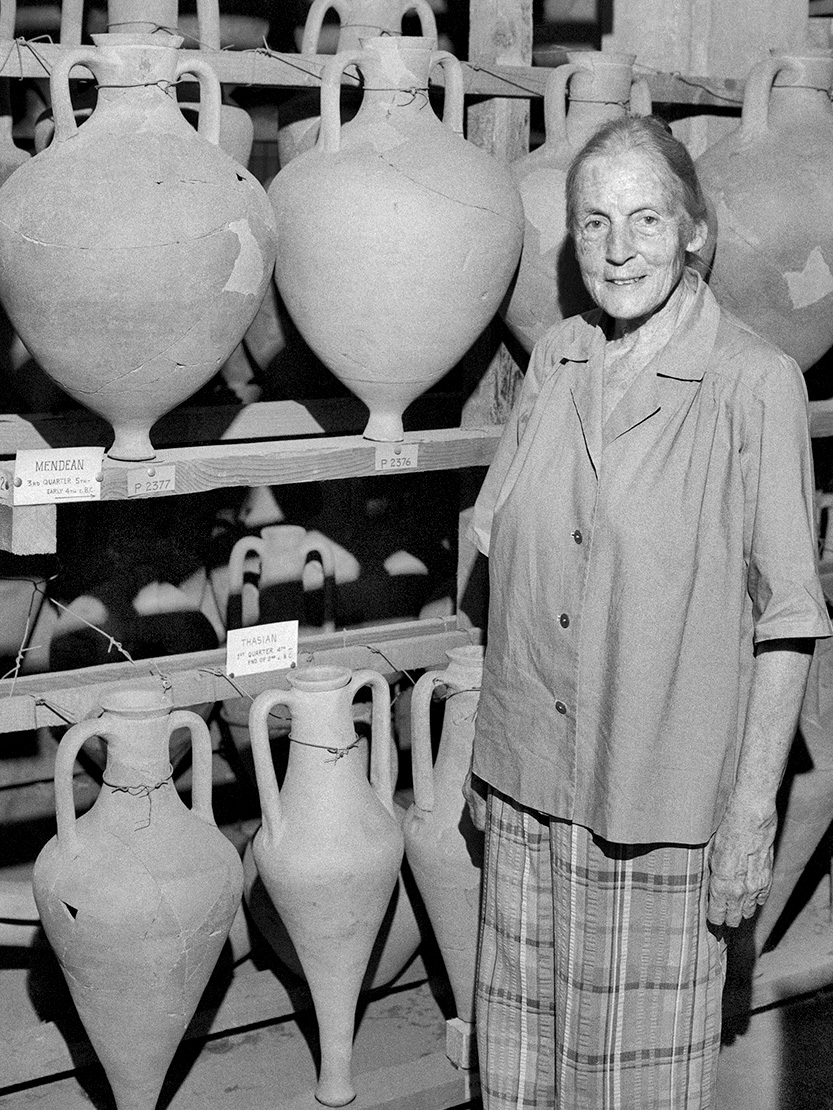
Lawall highlights the unifying element between Virginia Grace and the Student Center renovation: "The physical spaces of the American School—the dormitory rooms where we rest from the days and nights of research, the dining room where we share the puzzles of the day over breakfast, the Stoa of Attalos with all of its artifacts and excavation records, the desks in the Blegen Library—are constant reminders not only of our own efforts but also of the ground-breaking, fundamental research that made our work possible."
"Memories of Virginia Grace, and so many other pioneering scholars like her who are likewise being celebrated at the School, inspire us to ask new questions, use old data in new ways, and advance our fields of study as far ahead in our days as they did in theirs."
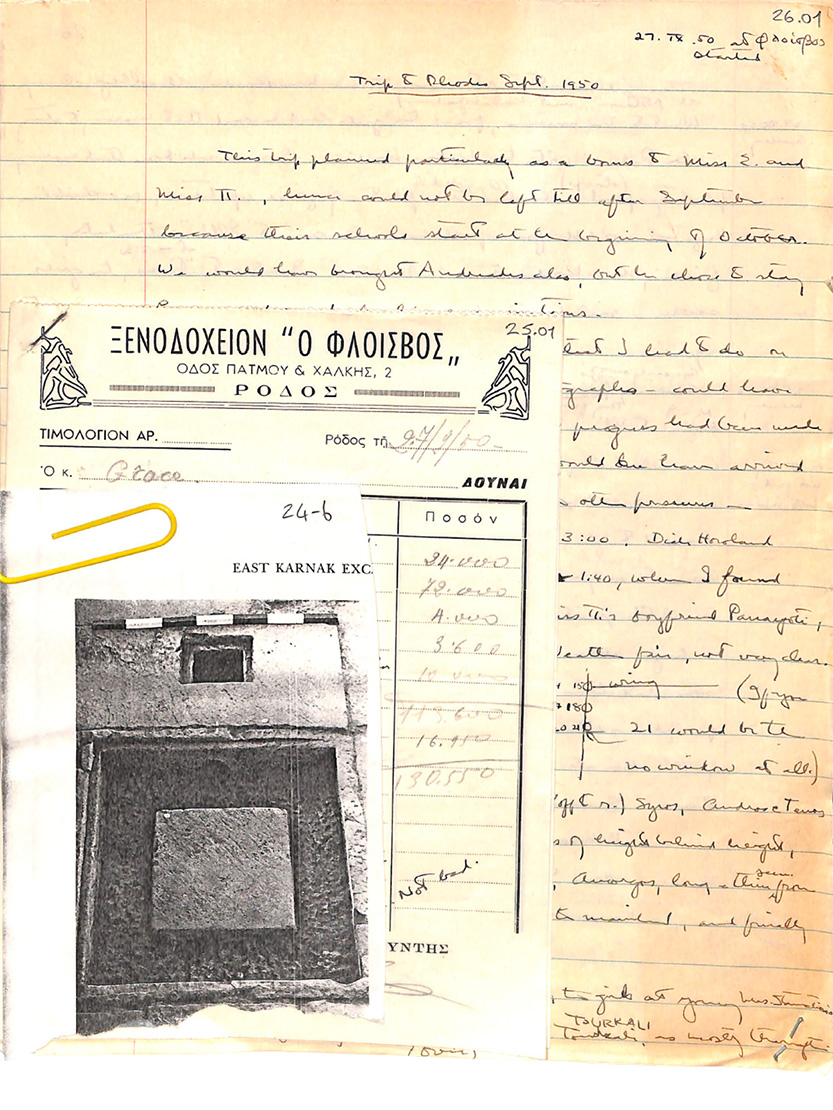
Susan I. Rotroff, Jarvis Thurston & Mona Van Duyn Professor Emerita at Washington State University in St. Louis, is the recipient of the Archaeological Institute of America's (AIA) 2011 Gold Medal Award for Distinguished Archaeological Achievement and the 2020 Aristeia Award for Distinguished Alumni/ae of the American School of Classical Studies at Athens. Rotroff provided this assessment of Virginia Grace's important work: "Many dissertations determine careers; few form the basis of entire disciplines. In the early 30s, Virginia Grace arrived in Athens to write a thesis on the amphora stamps from the first few years of excavation at the Athenian Agora. That task completed, she realized that meaningful conclusions could never be drawn from the finds of a single excavation; these widely traded objects needed to be studied over the whole of the geography that they traveled."
"She did not flinch at the prospect of reading and recording the many thousands of amphora stamps in the storerooms of Alexandria, say, or Delos. Although her work began at the Agora, its reach was cosmopolitan. By the time I met her, she was firmly ensconced as the reigning expert in the field; scholars wrote or traveled from all around the Mediterranean and beyond to consult her files and share their own discoveries. This exchange enabled her to build up the amphora archives, now housed in the Archives of the School and to develop a network of friends and colleagues that ignored boundaries and barriers like the 'Iron Curtain.'"

Rotroff continued, "Although she did not teach in a formal sense, she mentored generations of amphoristes and others whose research interests intersected with her own. My own experience of working with her was formative. As she patiently explained to me the reasoning behind the dating of a particular amphora stamp or deposit, she demonstrated a model of rigorous scholarship: prodigious knowledge, close attention to detail, constant awareness of the need to test hypotheses and make adjustments, all founded on a boundless curiosity about the forces behind the archaeological developments she was tracing."
"I met Miss Grace (few of my generation ventured to call her Virginia) when she was in her late 60s, no longer the vigorous walker that she had been before the after-effects of childhood polio restricted her mobility. She still came often to Loring Hall for meals and fellowship, and she never missed a day at the Agora. The woman I knew was not only an extraordinary scholar, but also a welcoming hostess (the parties in her small Kolonaki apartment were legendary), a lover of poetry, music, and cats, a political progressive but at the same time an archetypal grande dame. She was a large personality, formal, and fierce."
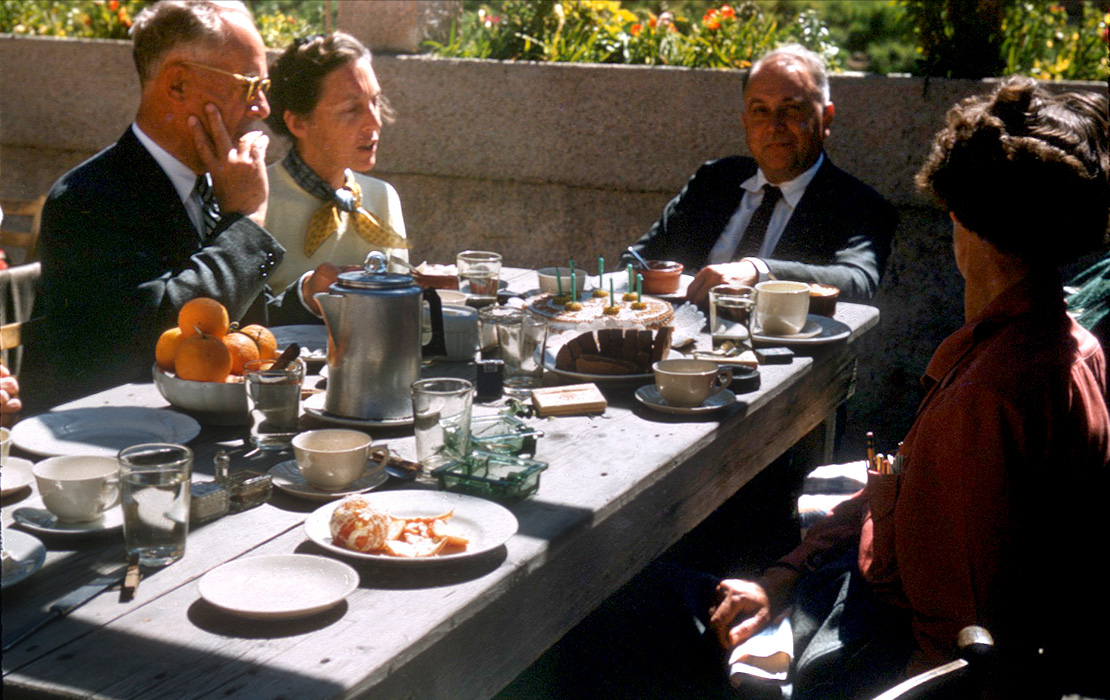
About Virginia Grace

Carolyn G. Koehler, Associate Professor Emerita at the University of Maryland, Baltimore County, began her study of transport amphoras under the guidance of Virginia Grace in 1971 at the School's Agora Excavations. Koehler continued to work with Grace for decades and wrote this touching tribute to her in the American Journal of Archaeology (Volume 100, Number 1, January, 1996)2:
"Institution: Miss Grace." That entry on a form at the American School of Classical Studies at Athens suggests how Virginia Grace had come to be regarded by colleagues and friends when she died in Athens on 22 May 1994. It was not just her imposing personality, retained to the end of her 93 years, nor her position as "die Nestorin' der Amphorenforschung," for which she was awarded the AIA's Gold Medal for Distinguished Archaeological Achievement in 1989. It was all the qualities of mind and character that went into her work: her vision, her imagination, the patience with which she gathered her material, the fierceness with which she demanded that the work be done carefully and accurately, the generosity she showed to visiting scholars, especially if they were working under difficulties, her contempt for sloppiness, her delight in others' enthusiasm, her compelling interest in a host of archaeological and literary topics, and above all her own excitement at seeing the pieces of the amphora puzzle gradually falling into place, each one created by the formulation and verification or rejection of innumerable detailed hypotheses within a vast framework of interlocking evidence—the monument she has bequeathed to archaeology. All of the many scholars who now build chronologies of the Hellenistic period or who study patterns of trade in the ancient Mediterranean depend in some way upon the evidence she garnered for over half a century from the terracotta jars used to ship wine and oil. And those who had the good fortune to work with her in person on some part of their material took something permanent from the immediacy of the experience.
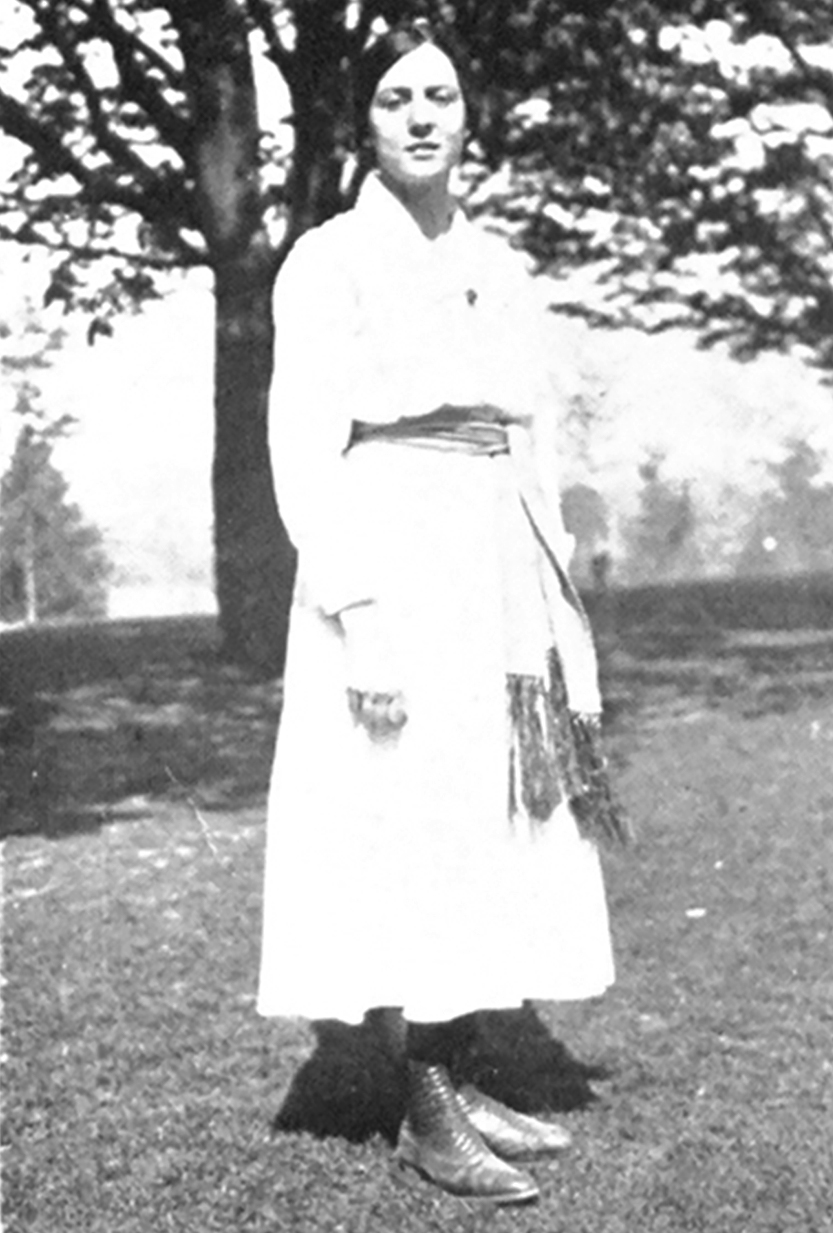
Virginia Grace prized her years at the Brearley School in New York City, where she grew up, and at Bryn Mawr College, from which she graduated in 1922. After teaching English and mathematics to secondary-school students for several years, she returned to Bryn Mawr for graduate work, interpolating a year in Greece in 1927/1928 as a member of the American School of Classical Studies. Her practical experience in archaeology began at the Geman excavations in Pergamon in 1931 and continued on teams at Halai in central Greece and Lapithos on Cyprus; she also catalogued material from the American School's first two years' excavation in the Athenian Agora. The special study she did there, "Stamped Amphora Handles Found in 1931-1932," Hesperia 3 (1934) 197-300, was accepted as her Ph.D. dissertation by Bryn Mawr.
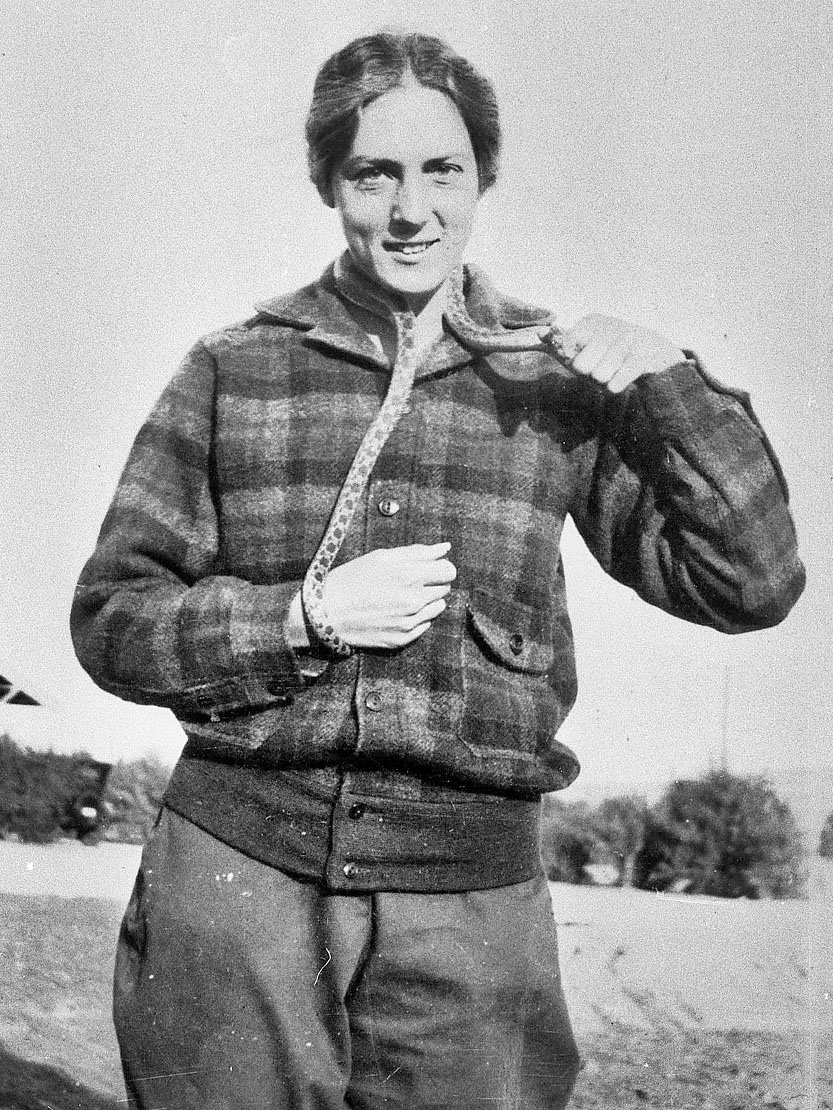
In 1935 she spent a memorable five months digging at Tarsus under Hetty Goldman and then returned to her work on the staff of the Agora excavations. Extensive travel allowed her also to examine transport amphoras in Alexandria, Antioch, Tarsus, Cyprus, and Corinth. When Americans were forced to leave Athens in 1940, she made her way to Cyprus, an island she always cherished. During the war years, she excavated at Kourion and assisted in the safe storage of Cypriot antiquities and later served with the State Department in Ankara and Cairo, from which she was evacuated to Eritrea. The year 1944 was spent with the OSS in Istanbul and Izmir (under Jerome Sperling and John Caskey, respectively) and again in Cairo. Back in the United States in 1945, she became a Visiting Member at the Institute for Advanced Study at Princeton.

When Virginia Grace returned to Greece in 1949 for good, the bulk of her amphora studies lay ahead of her. Indeed, they were literally that: heaps of stamped handles in the National Museum, for instance, whose ordering led to her identification of over 2,500 Knidian stamp types as the basis for analysis of that class. Visits of several months in Alexandria during the 1950s and 1960s concentrated upon the tens of thousands of Rhodian handles collected by the knowledgeable and hospitable Lukas Benaki and stored in his basement. From those long days and full weeks and the later painstaking analysis of years came the chronology of Rhodian magistrates and fabricants reported in "Revisions in Early Hellenistic Chronology" AM 89 (1974) 193-203. Ultimately the evidence allowed quite a striking precision, as when Knidian, Rhodian, and Sinopean handles pinpointed a date of about 183 B.C. for a major building in the Athenian Agora ("The Middle Stoa Dated by Amphora Stamps," Hesperia 54 [1985] 1–54).
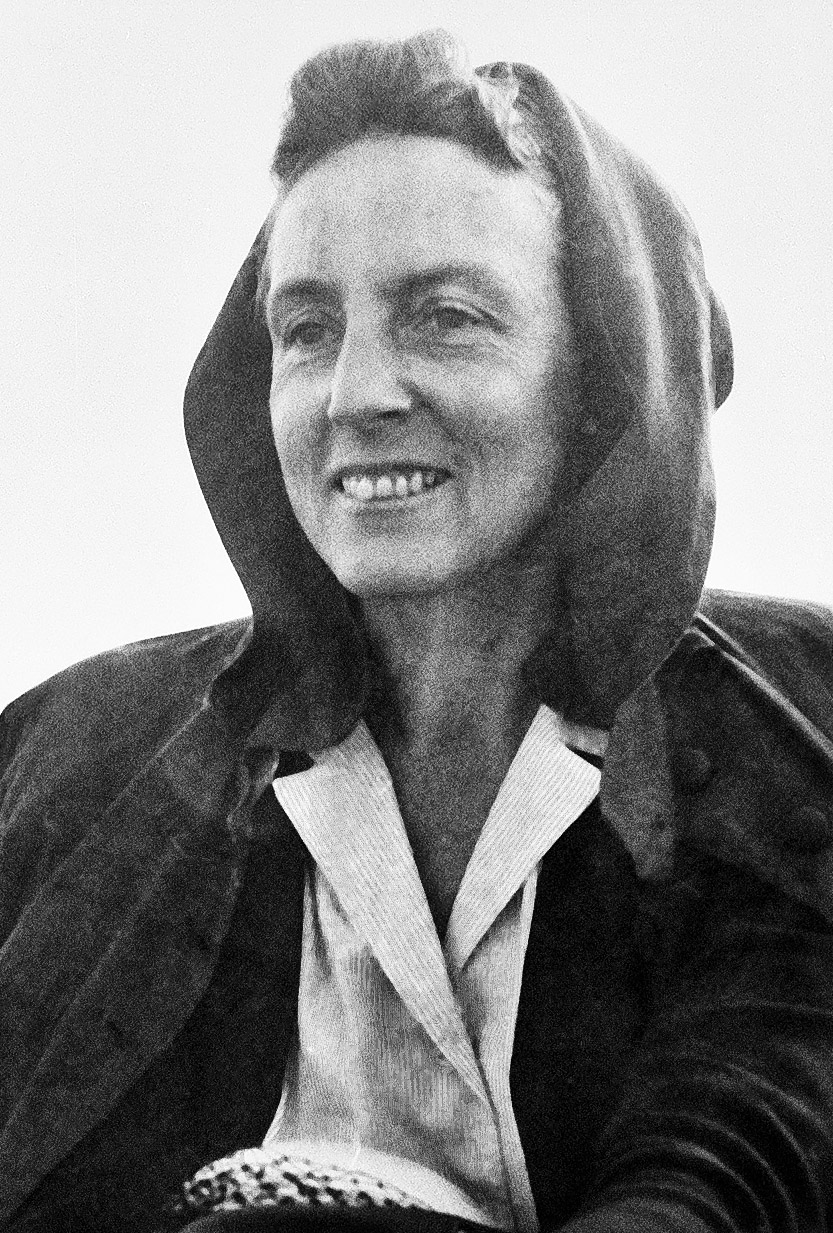
The solid data behind Virginia Grace's conclusions were amassed on file cards designed for making easy visual comparisons. By their means, she also restored readings of stamps that excavators brought her via rubbings and photographs by the hundreds. The Stamped Amphora Handle Department at the Stoa of Attalos in the Athenian Agora became a center where inquirers were always welcome. With the stalwart help over the decades of Maria Savvatianou-Petropoulakou and Andreas Dimoulinis and a handful of volunteers, its doyenne continually augmented her files and provided readings, dates, and analyses that helped to establish the stratification in countless excavation reports.
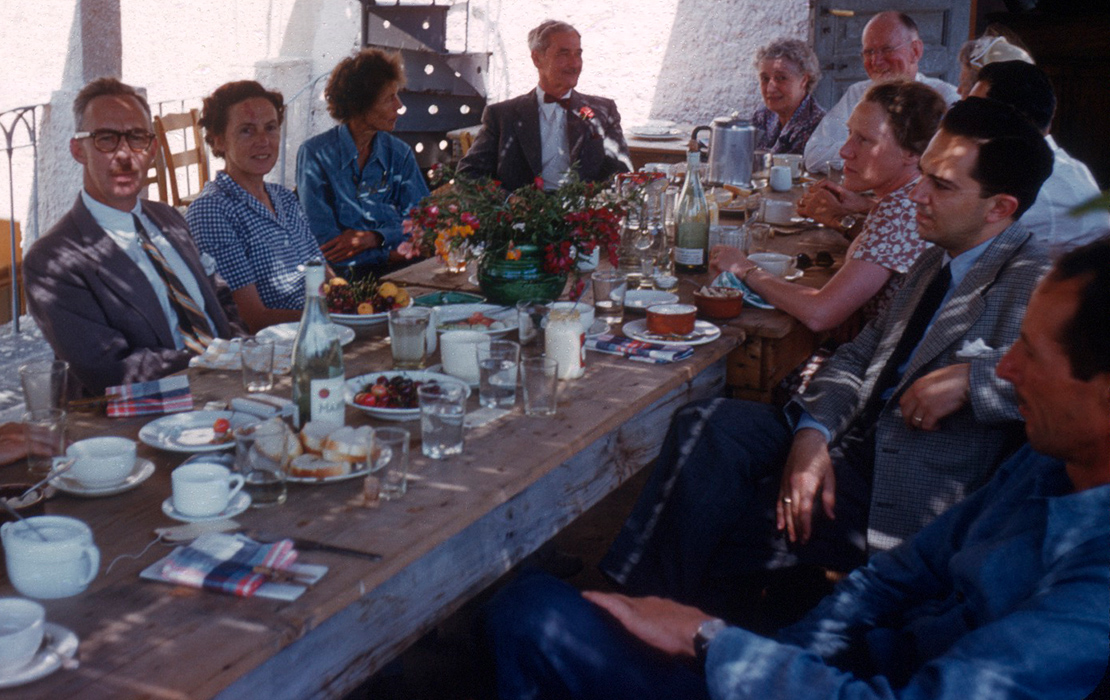
Some of these collaborations became very close ones, in particular that with Anne-Marie and Antoine Bon of the French School at Athens, which produced the catalogue of Thasian amphora stamps, Ètudes thasiennes 4 (1957). Virginia Grace's fascicle of Délos 27 (1970), presenting the Greek stamped handles from French excavations of the Maison des Comediens, outlines the major amphora classes and remains a basic introduction to the field. In this, as in all her writings, every word was carefully weighed, lest it state less than her full knowledge or imply more than she knew to be true. Her compact prose fills drawers of correspondence, some chronicling the mutual influence she and Soviet scholars such as B.N. Grakov exercised on each other as they discussed, in the Russian phrase, "monuments of ceramic epigraphy."

Virginia Grace expended enormous care on each endeavor, not least on her picture book, Amphoras (AgoraPicBk VI), a resource for layperson and specialist alike. Its layout, which echoes in part that of the exhibit in Shop IV of the Agora Museum, follows the principle underlying much of her work: to make the jars and stamps speak for themselves through meaningful juxtapositions in sequences and groups. She also arranged the ranks of amphoras in the basement of the Stoa for easy consultation by scholars who come from all over the world; reference too can be made instantly to any of the 25,000 stamped handles in the Agora. Many museums and excavations, including those in Athens (the National Museum and Kerameikos), Delos, Corinth, and Alexandria, where she superintended the transfer of Mr. Benaki's collection to the Musee Greco-Romain, owe the organization of their handles to her intelligent labors.

It is clear from the articles honoring Virginia Grace on her 80th birthday (Hesperia 51:3 [1982]) that she also fixed her own and others' interest beyond the stamped impressions themselves. Related shapes of amphoras revealed the development of a series. Study of capacities aimed at retrieving standard measures. Contents and methods of manufacture shed light on the people who used the jars, which was the real goal of her investigations. While her identifications and dates furnished en masse the underpinnings of economic history, she applied them individually to cargoes lost in the course of trade near Antikythera, Serge Limani, Porticello, Kyrenia, and Ulu Burun. In a sense, she had anticipated the last in "The Canaanite Jar," in S.S. Weinberg ed., The Aegean and the Near East: Studies Presented to Hetty Goldman (Locust Valley, N.Y. 1956) 80-109. It was all part of a continuum for her. Working up to the end, she was looking forward to the publication of further blocks of the structure in volumes on the Koan, Knidian, Corinthian, and Rhodian classes.
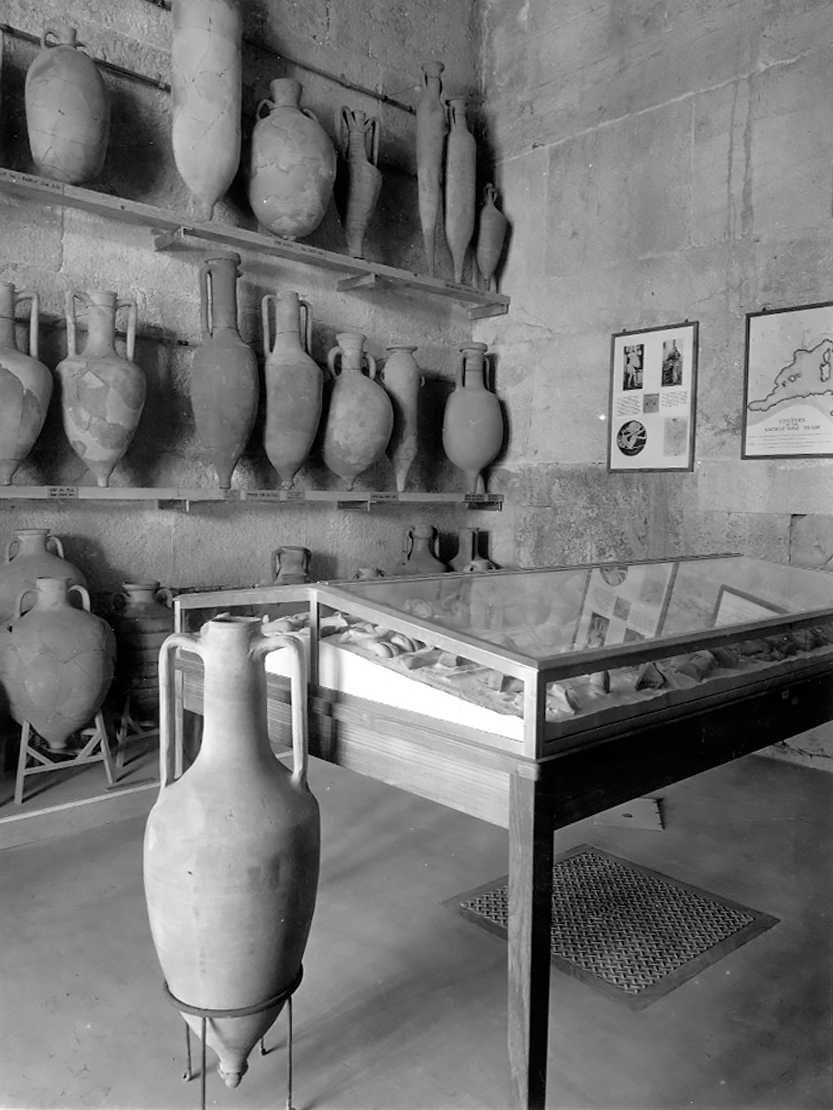
Virginia Grace's dedication to amphora studies was total, marked in part by her determination to remain in Greece at all costs. The slender finances on which she built her life's work included Agora fellowships, a Fulbright award, a Guggenheim Fellowship before the war and again after it, grants from the American Philosophical Society, and support from her family. Only she could have continued as she did. Often people were amazed to discover that the amphora enterprise was essentially a single person in a small room. She was a romantic who delighted in the adventure and found beauty in strange corners. In every trip she found pleasure (and, whenever possible, a swim). With her knack for connecting people, she made her apartment high on the slopes of Lykabettos a focus for friends who emerged from every context. Virginia Grace was a part of the international scholarly community as few Americans have been. She remains just as indissolubly part of the archaeological legacy she leaves.
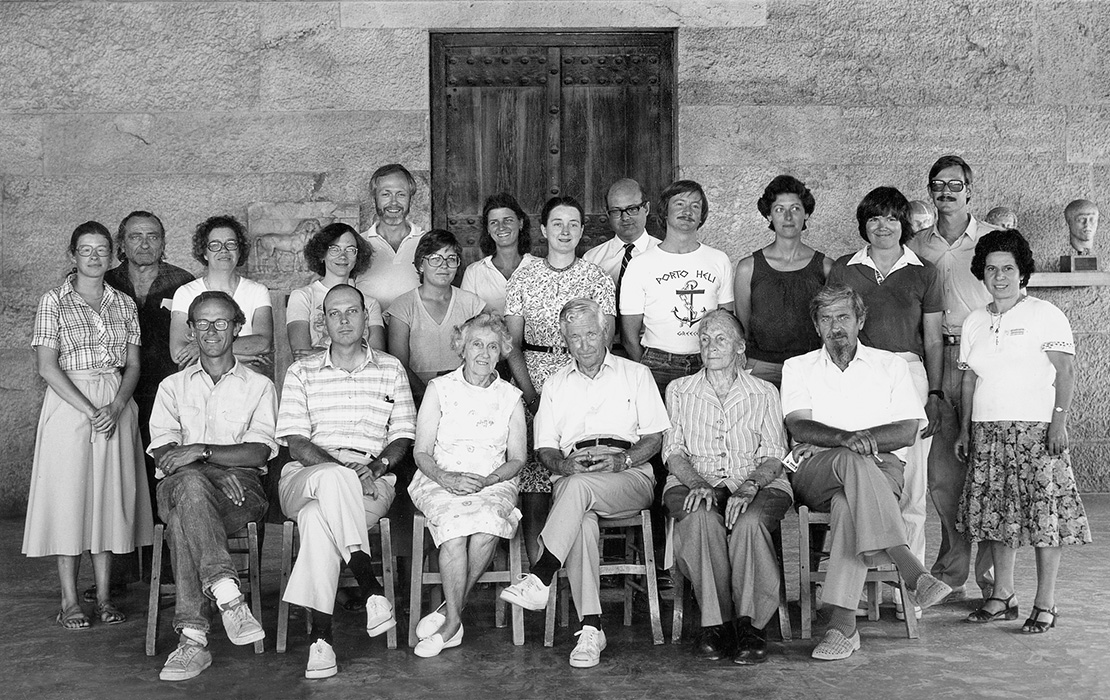
The Virginia R. Grace Papers
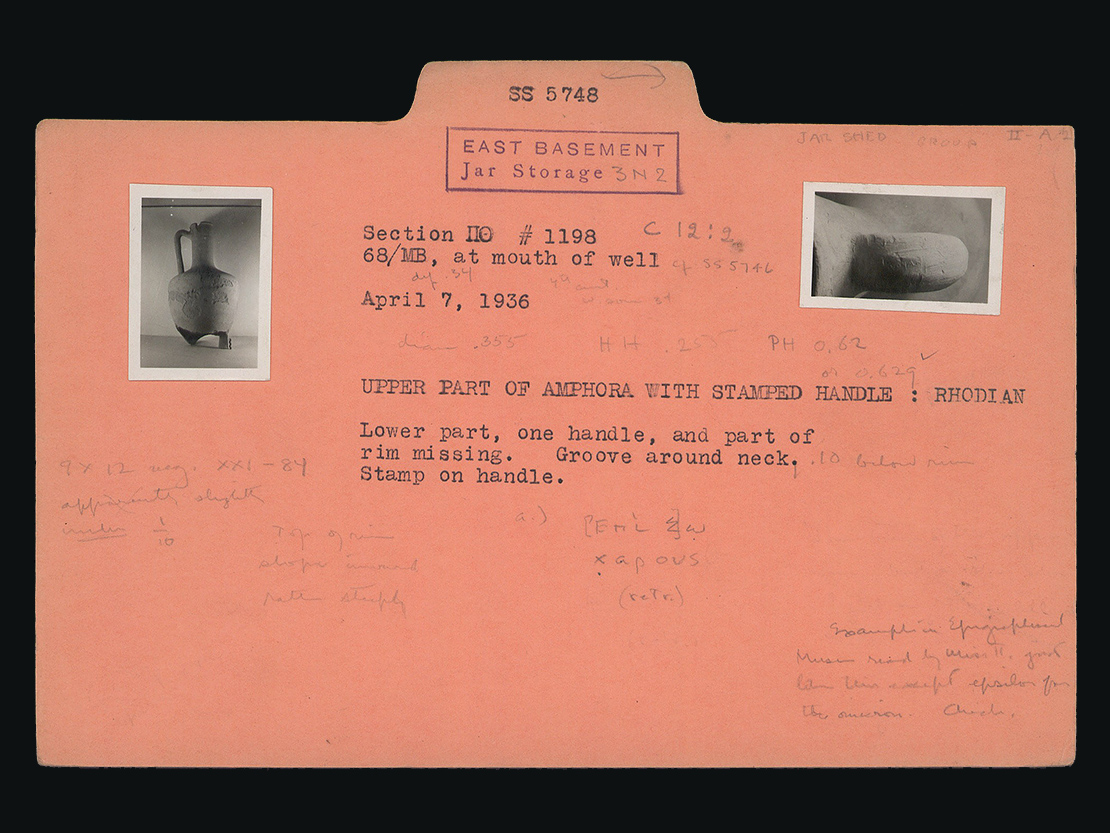
1936 Agora catalogue card of stamped Rhodian amphora SS 5748 with pencil notations by Virginia Grace
The American School's Archives is proud to house a collection of Virginia Grace's papers, which contains professional correspondence, photos, rubbings of stamps on cigarette paper, Grace's working notes, and, most importantly, the thousands of catalogue cards with information about stamped amphora handles throughout the Mediterranean.
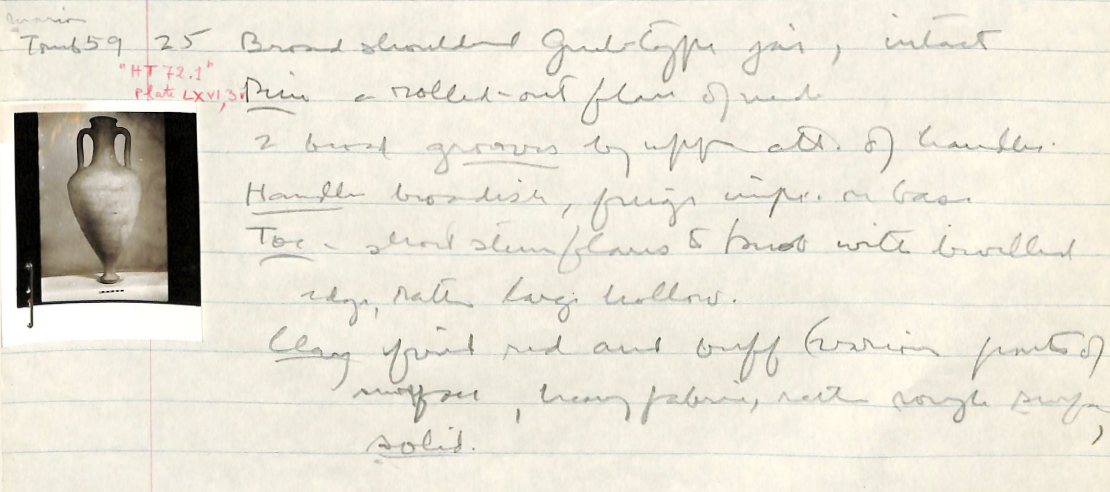
About Mark L. Lawall
Mark Lawall is a Professor of Classics at the University of Manitoba and a specialist in the archaeology of ancient Mediterranean trade. Much of his research concerns transport amphoras, the plain clay jars that were used for storage and shipment of wine, olive oil, and other commodities throughout the Mediterranean. He has worked at sites throughout the Greek world, including the Athenian Agora, Corinth, Troy, Ephesos, Gordion, and Olbia (Ukraine). He received his B.A. in Classics from the College of William and Mary in Virginia and his M.A. and Ph.D. in Classical Archaeology from the University of Michigan. An alumnus of the School (Regular Member 1991–1992, Associate Member 1992–1993), he has been Chair of the School's Managing Committee since 2017.
About the Student Center Campaign
The Student Center Campaign was launched in October 2018 to raise funds for renovating and expanding the three aging buildings that serve as the intellectual and residential heart of the American School: Loring Hall, the Annex, and West House. This transformative project will increase housing capacity, reduce energy consumption, add state-of-the-art features and technology, and bring the buildings up to the latest technical standards—all while preserving the complex’s historical appearance. The Student Center will remain the place where members of the community gather for meals, tea, ouzo hour, holiday celebrations, and lectures—a source of lifelong professional and personal relationships that characterize the collegial and intellectually vibrant atmosphere of the School. This modernized setting will enhance that experience and will meet the needs of the School community well into the future.
Support the Campaign
The goal of the Student Center campaign is $9.4 million, inclusive of a maintenance endowment. Thanks to generous supporters like the Friends of Virginia Grace, $6.7 million has been raised to date. The new Student Center is expected to open in June 2021.
To learn more about how you can support this historic initiative, please contact Nancy Savaides, Director of Stewardship and Engagement, at nsavaides@ascsa.org or 609-454-6810. Naming opportunities for a variety of spaces in the Student Center are still available. Donors can choose from a wide range of gift levels to name a room or area in honor of themselves, an American School scholar, or a family member, friend, or group. Please click the links below to view the nameable spaces and options that remain:
Student Center Construction Photo Gallery
Click this link to view more photographs of the work in progress.
1 Immerwahr, Sara A. "Breaking Ground: Women in Old Archaeology; Virginia Grace." Brown University. Accessed July 6, 2020. brown.edu/Research/Breaking_Ground.
2 Koehler, Carolyn G. "Virginia Randolph Grace, 1901-1994." American Journal of Archaeology, vol. 100, no. 1 (1996): 153-55. Courtesy of the Archaeological Institute of America and the American Journal of Archaeology.
Photos: Unless otherwise noted, all images are from the American School’s Digital Collections.
